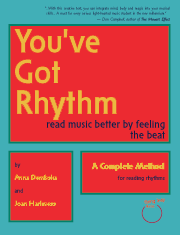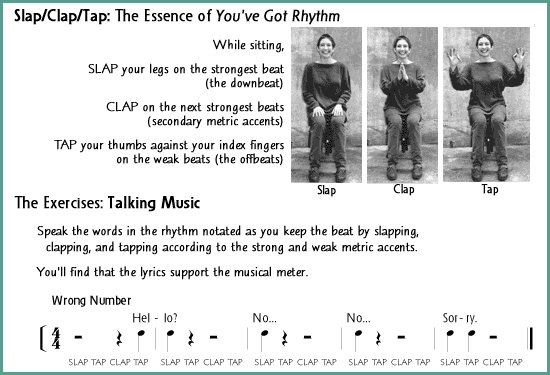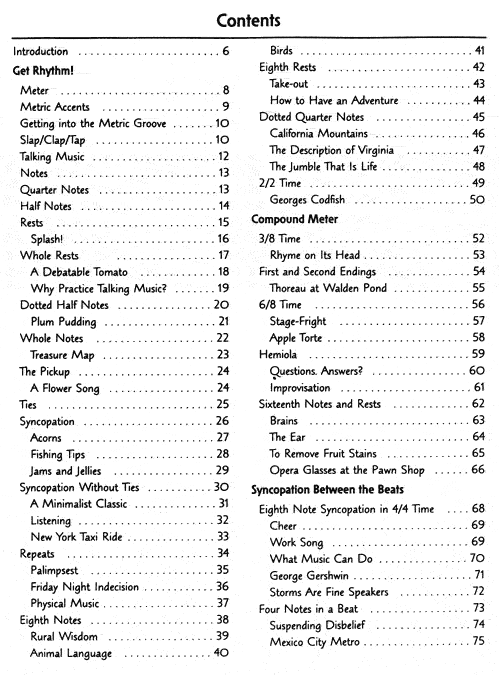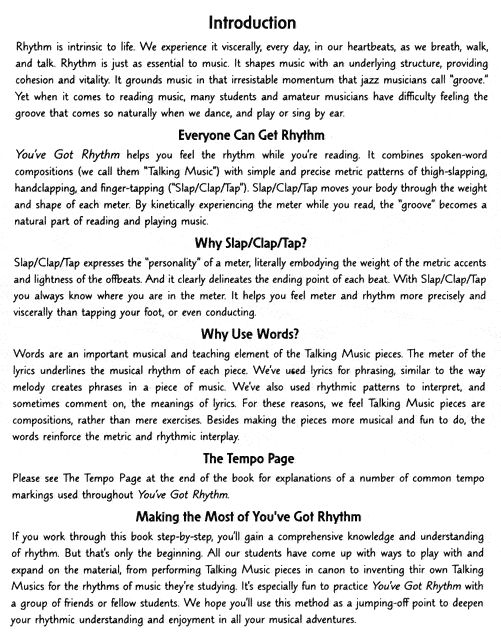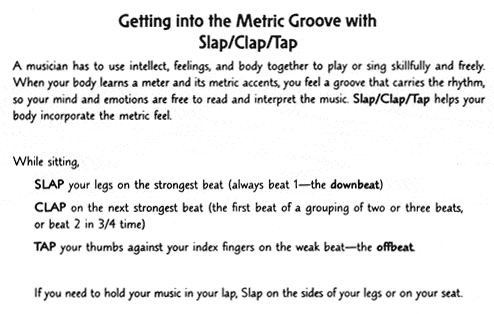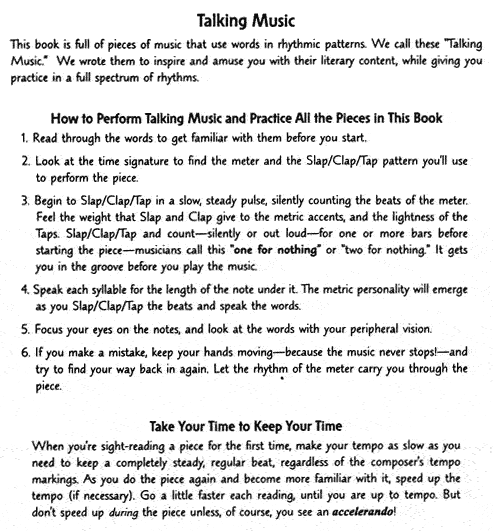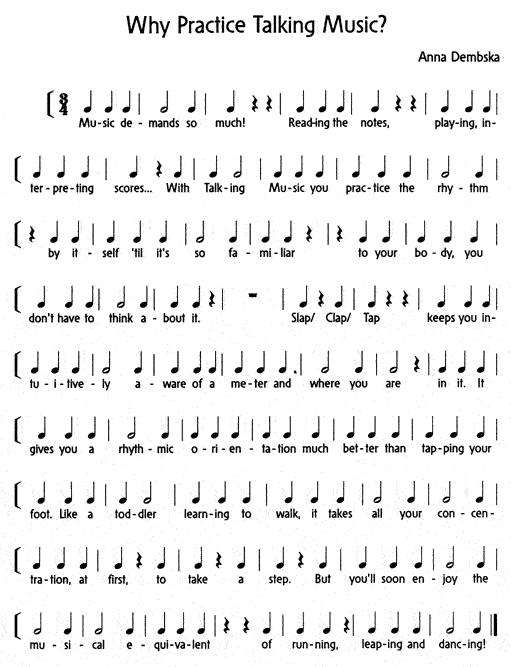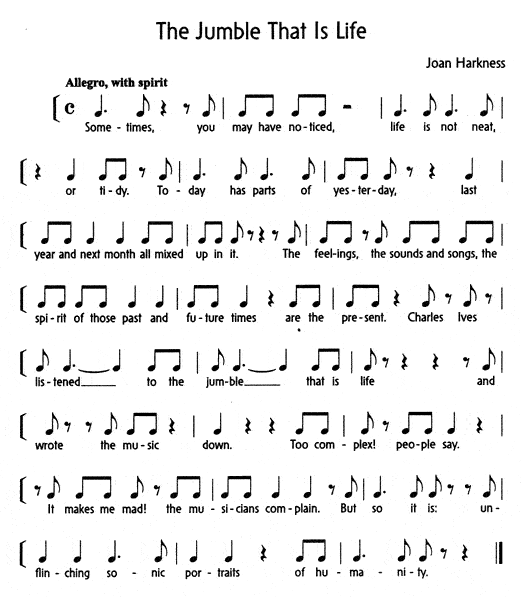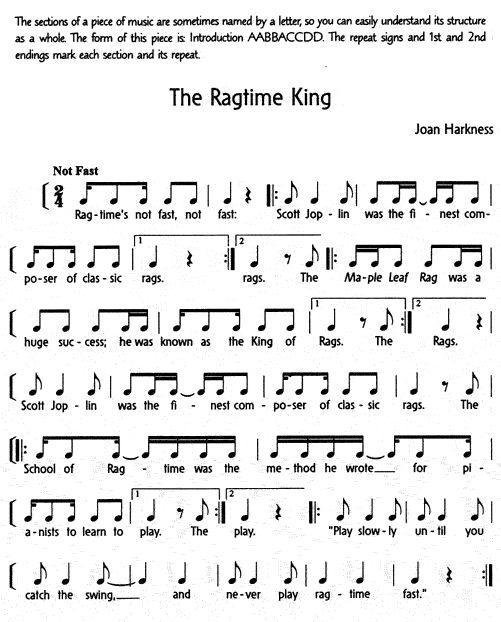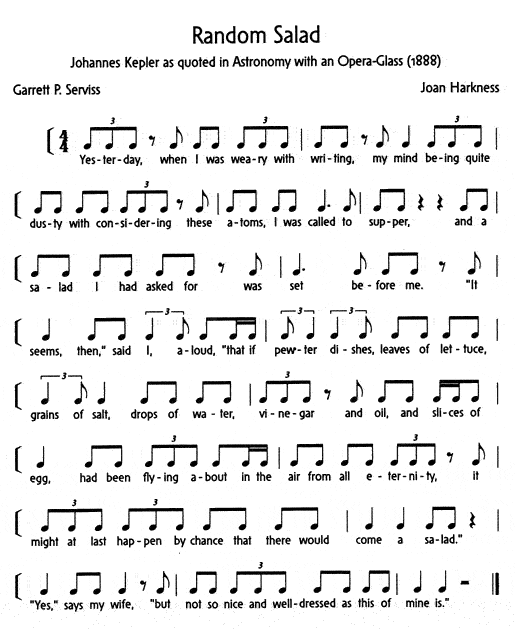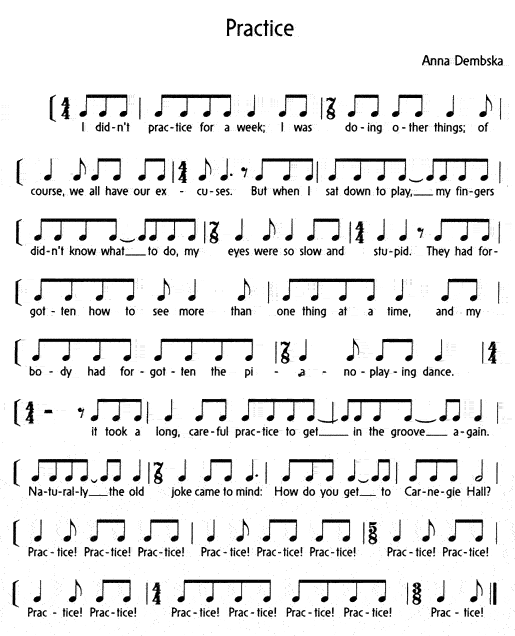What people are saying about You've Got Rhythm
“I took band and I didn't understand any note but your book makes it fun and easy.”
— Brittany Decleene, 4th grade student, Grace Lutheran
School, Sandy, Utah
“One seldom encounters a book of interest to all musicians—this may be one of those unusual books.”
— American Music Teacher
read the whole review …
“This step-by-step guide will help students understand rhythm kinetically and intellectually... Fresh and unique, this guide is recommended for school media centers and public libraries with music education collections.”
— Library Journal
read the whole review …
“In You've Got Rhythm: Read Music Better
by Feeling the Beat, Anna Dembska and Joan Harkness effectively collaborate to present a practical yet imaginative guide to improving one's ability to read music … Highly recommended for music students, You've
Got Rhythm is an excellent text for classroom instruction or personal tutorials.”
— The Bookwatch (Midwest Book Review)
read the whole review …
“I can just see a classroom of people, any age, slapping their thighs,
clapping their hands, and tapping their fingers while reciting together, ‘We wish that Americans appreciated good radishes and used them as largely as do the French …’ Finally: relief for the rhythmically challenged—and without that nasty medicinal taste!”
— Ed Roseman, author, Edly's Music Theory for
Practical People
read the whole review …
“In their new book You've Got Rhythm, Anna Dembska and Joan Harkness have come up with a way of teaching rhythm which not only avoids boredom, but actually makes rhythmic training fun. I am impressed with this book's outstanding choice of texts, and the musical way in which words are combined with the rhythmic patterns … You've Got Rhythm is practical and fun to use, especially in group or class settings. My students were amused by the interaction of words with rhythms, and enjoyed doing the slap-clap-taps while performing the pieces … The power of words to combine individual notes and rests into larger wholes is one of the reasons this book works so well.”
— Dr. Jon Ensminger, piano faculty, Northland Baptist Bible College
read this in-depth review at the Piano Pedagogy Plus website
“Authors Anna Dembska and Joan Harkness both have decades of music teaching, writing, performing, and arranging behind them, and their love of music is infectious. As you learn to read rhythms, you can feel the fun in the music as you read... Teachers can easily adapt this superb and delightful resource for classroom purposes.”
— M. Polonsky, Fearless Books
read the whole review
““You've Got Rhythm is a great series. With this creative text, you can integrate mind, body and magic into your musical skills. Anna Dembska and Joan Harkness have opened a new gateway to inspire, enlighten, educate, and improve your musical skills. A must for every serious, light-hearted music student in the new millenium.”
— Don Campbell, Author, The Mozart Effect
“ … One of the most valuable books a teacher could own and definitely one that every music student should have … It is truly a major contribution to the world of music and, especially, the teaching of music. My sincere suggestion is that you run, don't walk, to your computer, post office or phone and order this unique and totally comprehensive book today!”
— Dr. Martha Baker-Jordan (Professor of Piano, Class Piano,
and Piano Pedagogy at California State University, Fullerton), California
Music Teacher
read the whole review
“Well done and … useful to anyone concerned about developing rhythmically literate musicians.”
— American String Teacher
read the whole review
“It's hard to be too rich, or to have too much rhythm. What this book can do is free your mind from having to count meter, by teaching your body to do it. Your mind will thank you … [The authors] provide as exercises their beautiful rhythmic text settings of classic English and American prose, which I consider reason enough to buy the book even if you do have perfect rhythm.”
— Music For the Love of It
read the whole review
“Your book is marvelous … your approach is wonderfully intuitive and intelligent.”
— Steve Schneider, Certified Music Therapist (CMT), Congers, NY
“I ordered your book a few months ago, then got a new 8th grade flute student who had a very poor concept of rhythm. I'd been eager to try your approach and thought her perfect as my ‘experiment.’ I loaned her my book for the first few weeks, wanting to see how it went before asking her to make the purchase. Her progress in one week was truly amazing. We've been at it for just a few weeks.”
— Andrea Wilson, flute teacher, Findlay, Ohio
“Your You've Got Rhythm books are just what I've been looking for. At last—a method that makes rhythm concrete! My students love them. Thank you! Thank you!”
— Melissa Sweet, flute teacher, Saugerties, NY
“I love using You've Got Rhythm during my cello lessons... Bravo for coming up with this original, creative approach to teaching rhythm to students of all ages …”
Martha Siegel, cello instructor at the United Nations International School,
The Henry Street Settlement and the Mary Lewis Academy
read how this cello teacher uses You've Got Rhythm in her lessons.
“I just got my shipment from you today and I'm delighted! I admit to some skepticism about slap/clap/tap, but the first student I tried it with delivered immediate improvement in her Bach Gigue after trying a triple meter talking music. It was certainly the steady pulse of slap/clap/tap that helped her understand and apply the metric accents so quickly. My second student is from a musician family and her mother wants to order her own copy after we tried one of the pieces. So it's a big hit here in central Mass! I'm looking forward to exploring the new ‘repertoire’ available to me. And I will show the book around to my colleagues as I'm sure they'll love it too.”
— Joan Ellersick, music teacher, Southboro, MA
“Can't believe I'm out of books; things have been busy, extra work, preparing students for evaluations, particularly those who don't practice. But all are enjoying the You've
Got Rhythm books; and the fun thing for me is that those older students who thought they knew it all are finding them challenging and fun, too!I find them really helpful for beginners because it helps alleviate their frustration at not being able to play for the first few weeks and to learn the note values.”
— Lilias Green, viola and violin teacher, Camarillo, CA
“You've Got Rhythm is the most innovative and logical approach to teaching rhythm I've encountered. My students enjoy the subtle humor in the texts and references to famous (and not-so-famous) composers. The accessible layout makes the material fun and easy to use. The use of words instead of nonsense syllables prepares students well for ‘real’ sight singing, and encourages accurate note length. This series will become a regular part of my curriculum.”
— Margaret Martin Kvamme, Conductor, Concert Choir and Instructor, Music Fundamentals, University of California at Santa Cruz
“Talking Music perfectly translates the natural rhythm of speech into the complexities of musical notation. This method fairly sparkles with material which is superbly organized, beautifully inspiring, and hilariously fun for all.”
— Sally Northcutt, Piano Teacher and Feldenkrais® Practitioner, San Francisco
“I'm loving You've Got Rhythm. I 'm learning so much and it's opening doors to music skills I felt ‘shut out of’ growing up. Slap/Clap/Tap really works for me.”
—Sarah Pirtle, recording artist, educator, and Director, The Discovery Center, Greenfield, Massachusetts
“I was amazed how precisely and musically You've
Got Rhythm introduces the English language to non-native speakers. My 5th and 6th graders were delighted to learn both rhythm and English at the same time. Talking Music is truly a universal language!”
— Atsuko T. Ezaki, DMA, Composer and Music Teacher, The Greenwich Japanese School
“You've Got Rhythm offers a new approach to an age-old problem. It is a fun and organized method that leads to mastery of the single most important component of music-making—one that creates obstacles for so many. With erudition and wit, the authors help us to transform the abstract dots on any page of music into living physical sensations that lead to a vibrant and visceral understanding of rhythm. It makes music come alive.”
—Raj Bhimani, independent piano teacher and Faculty, 92nd Street Y School of Music
“You've Got Rhythm takes rhythm off the page and puts it where it belongs—in the body and in the soul.”
— Matthew Brady, Piano Teacher and Choral Director, Brooklyn Youth Choir

